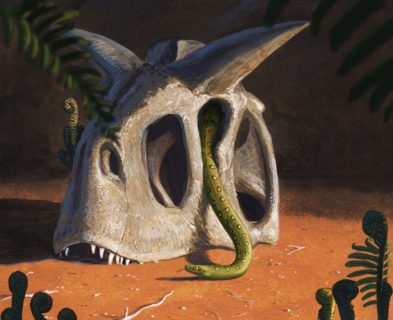Snakes diversified due to mass extinction
FAU researcher investigates the role of disasters in evolution
Snakes benefited from the mass extinction brought on by the asteroid impact 66 million years ago according to a new study published by scientists from FAU, the University of Bath, the University of Bristol and the University of Cambridge. The asteroid impact wiped out 95 percent of all life on Earth, including the dinosaurs, and only a few species of snake survived. The lack of predators and their ability to survive for long periods without food helped snakes to spread to other continents and exploit new habitats, allowing a wide variety of new species to develop. The patterns seen in snakes show that natural disasters play a greater role in evolution than previously thought. The results were published in the journal Nature Communications.
A team of scientists led by Dr. Catherine Klein, a postdoctoral researcher at GeoZentrum Nordbayern at FAU, examined fossils and gene sequences from modern snakes and were able to determine that all species of snake alive today can be traced back to only five species that survived the mass extinction. Whereas the ancestors of modern snakes probably lived somewhere in the Southern Hemisphere, new species seem to have spread to Asia for the first time after the mass extinction. The fact that several natural predators had been wiped out made it considerably easier for snakes to colonise new habitats. By analysing fossils, the scientists also discovered that snakes’ skeletons changed considerably after the mass extinction. New groups appeared including giant sea snakes up to 10 metres long. ‘Snakes not only survived the mass extinction that wiped out so many other species, they started innovating and using their habitats in new ways,’ explains Dr. Catherine Klein. Snakes then began to diversify and produced new species like vipers, boas, pythons and cobras over the course of several million years. There are over 4000 known species of snake today.
‘It seems that evolution is at its most experimental and innovative during the periods immediately after a mass extinction event, which is why we could consider extinction as a form of ‘creative destruction’,’ explains Dr. Nicholas Longrich, co-author at the University of Bath. Species are wiped out and the survivors can use the gaps in the ecosystem and exploit new habitats and lifestyles. This makes life even more diverse than before.
Further information:
Communications and Press
